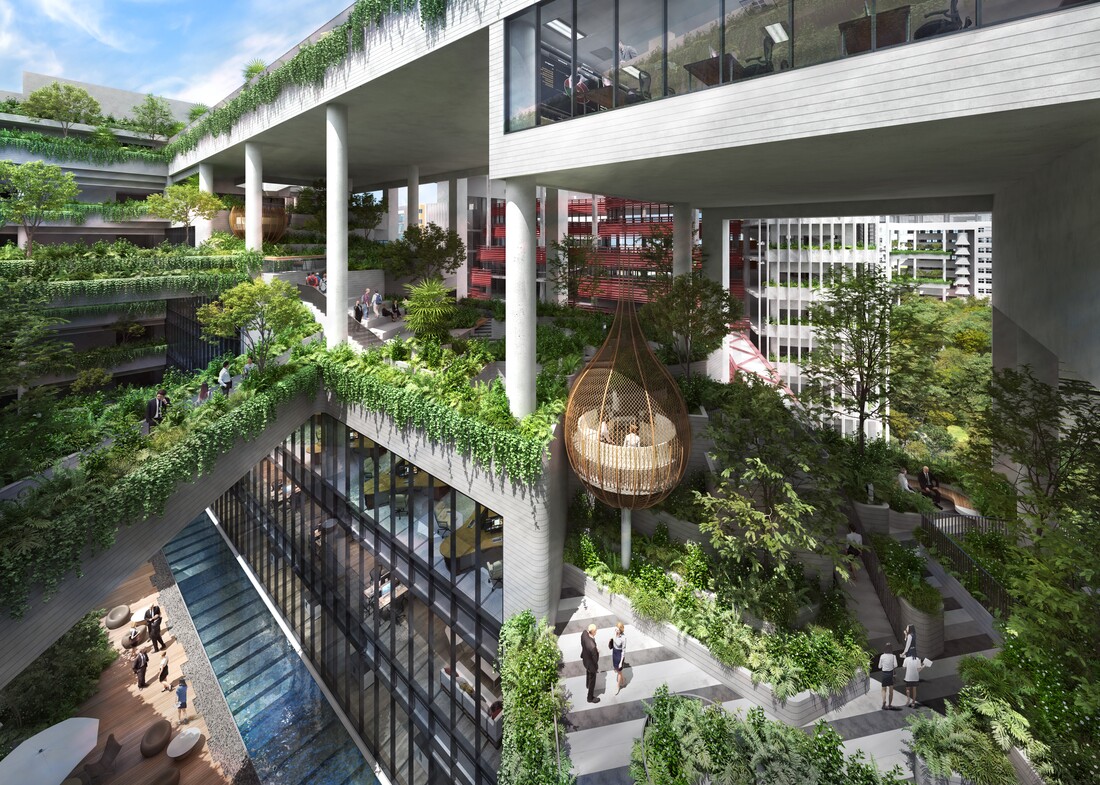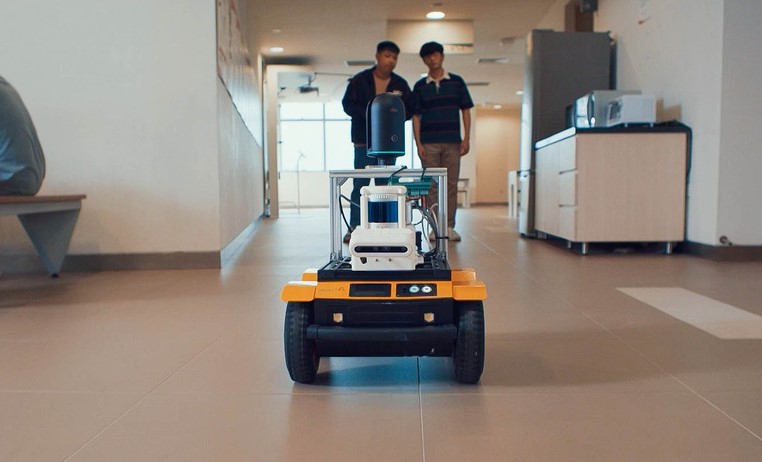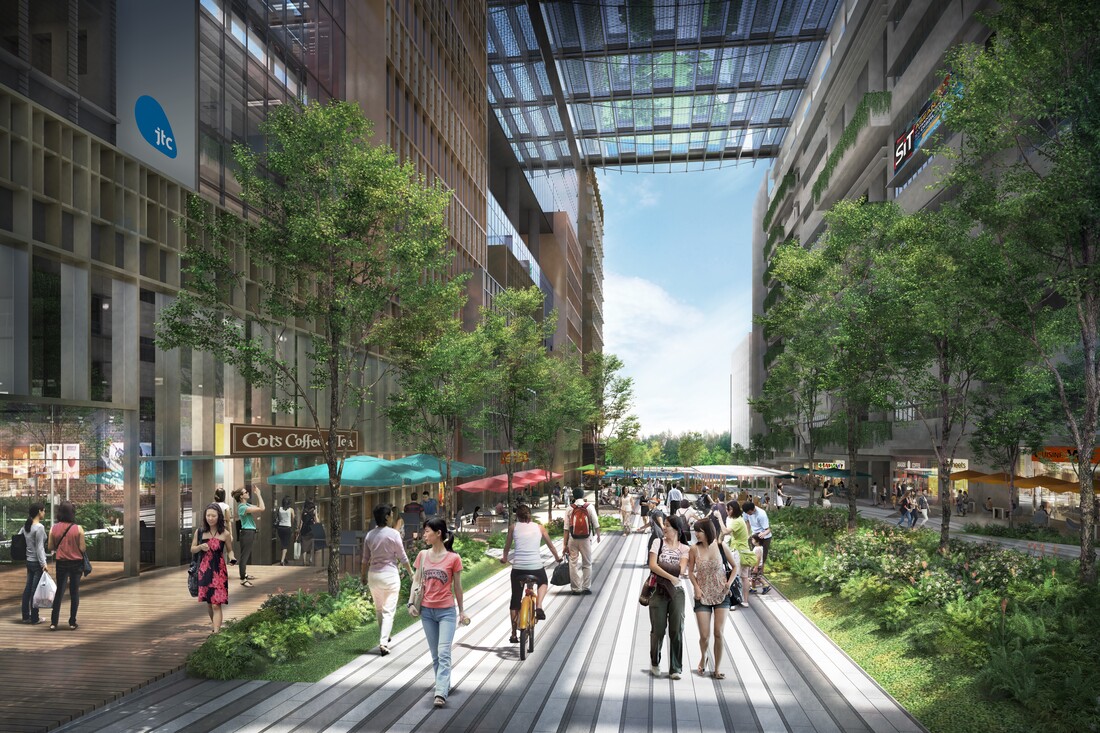BRANDED CONTENT
A smart district that fosters collaboration and partnerships among innovators
Singapore’s first tech-enabled and sustainable smart district, the Punggol Digital District, will be equipped with the Open Digital Platform that will enable communication and integration among different operating systems

An artist’s impression of the upcoming Punggol Digital District, Singapore’s first tech-enabled and sustainable smart district. PHOTO: JTC
Follow topic:
When the Singapore Institute of Technology (SIT) moves to its new campus in the upcoming Punggol Digital District (PDD) in 2024, its students and staff may be able to use robots for tasks such as last-mile deliveries, security patrols and more.
The university is working with local robotics firm dConstruct, one of the PDD’s key ecosystem partners, to explore ways to deploy such robots in its future campus and the district.

The Singapore Institute of Technology has partnered robotics firm dConstruct to scan part of the school’s building in Nanyang Polytechnic, to better understand how to deploy robots.
SIT students have already tapped dConstruct’s robots and software to scan three levels of the school’s building in Nanyang Polytechnic and create virtual replicas. Such digital maps could be used to programme robots for deliveries and patrols, among other purposes.
The two partners are not alone in pursuing innovation. Even though PDD, Singapore’s first tech-enabled and sustainable smart district spanning 50 hectares, will open in phases only from 2024, its master planner and developer JTC is already encouraging future tenants to collaborate and develop projects through a PDD Living Laboratory programme.
The two partners are not alone in pursuing innovation. Even though PDD, Singapore’s first tech-enabled and sustainable smart district spanning 50 hectares, will open in phases only from 2024, its master planner and developer JTC is already encouraging future tenants to collaborate and develop projects through a PDD Living Laboratory programme.
JTC aims to foster new partnerships, investments, business models, jobs, products and services through the programme. Organisations that take up space in the PDD are automatically enrolled in it. They can get data, join forces with others in the PDD ecosystem and test-bed their innovations in the district.

Government agencies can study these projects, including their roll-outs, to gain insight into the technical and policy frameworks needed to support the adoption of new technologies, systems and solutions. This will help to advance Singapore as a Smart Nation.
Besides SIT and dConstruct, other future key partners in the PDD ecosystem have also begun projects. Cyber security firm Group-IB has teamed up with SIT to create a cyber security testing platform to trial new protective applications, systems and solutions.
Power components maker Delta Electronics has constructed a fully automated container smart farm in the PDD Site Gallery, which features upcoming technologies that can help firms, among other investments. The farm has sensors to detect environmental conditions, a smart microclimate control system, automatic seed sowing equipment and other technologies.

A pioneering platform for innovation
After firms move into the PDD, they will be able to harness its Open Digital Platform (ODP) to enhance their projects. Co-developed by JTC and the Government Technology Agency (GovTech), the ODP is the district’s digital backbone, and one of the first of its kind. With JTC and GovTech managing the ODP, users can be assured that their data will be kept private and secure.
Mr James Tan, director of JTC’s Smart District Division and GovTech’s Sensors and Internet of Things division, who is co-developing the ODP, said smart city technologies tend to work in silos. “Autonomous vehicles, lifts, district cooling systems and other smart city technologies operate in their own protocol, or ‘language’. They cannot communicate directly with one another,” he explained.
“While you may be able to walk into a building and gain instant access as the facial security system recognises you, it is unable to instruct the lift to automatically pick you up and send you to your floor, as the two systems do not understand each other.”
The ODP breaks new ground by enabling these and other systems to “talk” to one another via an open standard multiprotocol middleware, paving the way for novel ideas for integrated operations. Examples of how the ODP could operate include enabling mail delivery robots to “speak” to lift and gantry systems so that they can have a seamless journey.
The ODP has a second critical component – a digital twin. By collecting data, including from weather, temperature, power consumption and other sensors and meters, it can create and maintain an up-to-date virtual replica of the PDD.

Companies will be able to use this as a digital proving ground to turn their ideas into reality, test concepts using real data, and experiment with changes without putting their products or the district at risk. They can use the digital twin’s event simulations and historical playback functions to assess their innovations’ performance under various conditions too.
JTC is trialling the ODP at its JTC Summit building in Jurong and Woodlands North Coast hub. It will also make its building data available to innovators in the PDD when the district opens. “With the data, bright minds can develop new products and services. This will make Punggol an economically competitive estate for businesses and start-ups,” said Mr Tan.
The future of smart cities
Companies will find many potential partners in the PDD to design, finetune and test ideas for smart cities. Delta Electronics, Group-IB and Wanxiang Blockchain, a leader in the blockchain field in China, are just some of the multinational firms that will be key ecosystem partners of the district, which is slated to create 28,000 jobs for the digital economy.
The PDD will also have a vibrant ecosystem of organisations that spans government agencies, firms, associations and academic institutions. In fact, it will have the highest concentration of cyber security associations here, including Cyber Youth Singapore, the Association of Information Security Professionals and the Cloud Security Alliance’s Singapore Chapter.
With the SIT campus co-located on site, firms can tap its wealth of talent. SIT, JTC, Group-IB, the Cyber Security Agency of Singapore and cyber security community Division Zero have set up the Bug Bounty Programme, where SIT students can test their hacking skills on real systems by identifying bugs and vulnerabilities.
Ms Sophia Ng, JTC’s director of infocomm and media, said: “We recognise that having a strong community with like-minded enterprises and partners who are keen to collaborate alongside one another is important – growing alongside to support each other’s success.”
“Hence, this is a big part of what we do at JTC: building ecosystems within our estates for businesses to work with one another and alongside students and even the public, allowing for constant ideation and innovation.”
The PDD will have an array of smart and sustainable amenities too. These include electric autonomous buses, a smart grid to utilise renewable energy and optimise electricity use, a smart parking system with an app for drivers to reserve parking lots and car plate recognition technology for easy entry into car parks, and more.
Its buildings will be oriented to maximise daylight for lighting and natural ventilation. It will also be integrated into its surroundings, with its proximity to Coney Island, a nature haven, and the old Punggol Road transformed into a 1.3km-long green pathway and heritage trail.
Mr Kok Poh June, JTC’s group director of New Estates Division 2, said: “PDD will be Singapore’s living demonstration site for users and visitors to experience the Smart Nation vision. The future of smart cities will be created at the district, with trials in it scaled to different business districts in Singapore in the future.”
The PDD will have an array of smart and sustainable amenities too. These include electric autonomous buses, a smart grid to utilise renewable energy and optimise electricity use, a smart parking system with an app for drivers to reserve parking lots and car plate recognition technology for easy entry into car parks, and more.
Its buildings will be oriented to maximise daylight for lighting and natural ventilation. It will also be integrated into its surroundings, with its proximity to Coney Island, a nature haven, and the old Punggol Road transformed into a 1.3km-long green pathway and heritage trail.
Mr Kok Poh June, JTC’s group director of New Estates Division 2, said: “PDD will be Singapore’s living demonstration site for users and visitors to experience the Smart Nation vision. The future of smart cities will be created at the district, with trials in it scaled to different business districts in Singapore in the future.”
Visit PDD's website for more information.


